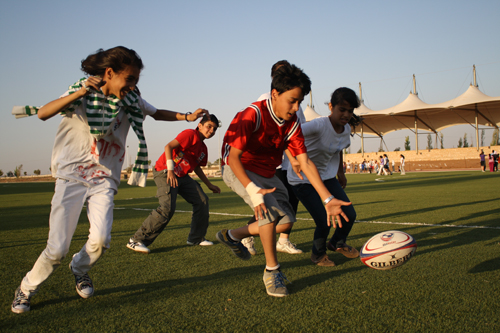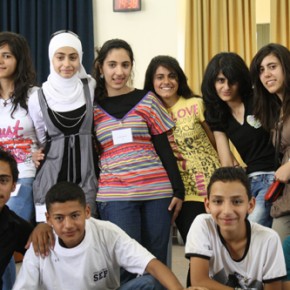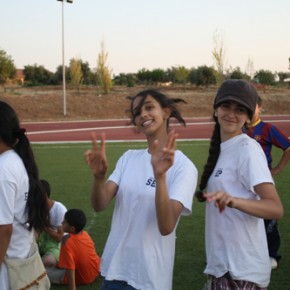
by Conrad Lee:
After teaching a few weeks of classes, I’ve gotten to know my students and their level of English a little better. I teach the most advanced group of 8thgraders at SEP, which means that I have the privilege of interacting with some of the brightest young students in Jordan. Although most of them come from lower and middle class backgrounds, they are just as socially-adjusted and fun-loving as any other students their age. They love poetry, games, and—as I discovered discussing their Arab identity.

I had my students read and memorize the poem “Identity Card” by Mahmoud Darwish. After I told them what it was about, they were all eager to share what they thought of Palestine, even though most of what they knew came from hearing their parents talk at home. One girl had recited the poem in its original Arabic for a poetry competition before. Later, when we wrote thank you notes, one boy brought up his for me to read; I was pleasantly surprised to find that it began, “Dear Mum, Thanks for raising me as a Muslim Arabian child.” It is encouraging to see that even with the steady influence of American culture and modernization, young Jordanians still take great pride in their own identity.
On other days, we learned the lyrics to “Hey Jude” by the Beatles, worked through a section from a practice SAT test, and played our own version of the caption contest from the New Yorker. Most of the time, we write sentences and paragraphs—lots of them—and take them apart for spelling and grammar. Yesterday, we started reading one of Tolstoy’s short stories. My work basically consists of culling selected stories, poems, and writings that I think are challenging but manageable enough to share with the class. Sometimes the kids get bored, especially if the material gets too dense, but for the most part they manage to keep up.

One of the things I’ve noticed is that there are some writing mistakes that seem particular to students whose native language is Arabic. For example, they don’t know when to use periods. Instead of writing complete sentences, they will simply put a comma at the end of each clause, and sentences will run on and on, in a stream of clauses punctuated by a slew of commas and the occasional “and” or “so.” Also, they hardly ever use capital letters correctly. Capital letters will appear in odd places, like in the middle of a word, or completely randomly, but almost never at the beginning of a sentence. Knowing some Arabic has helped me understand why these errors are so common. There are no capital letters in Arabic, so students tend to disregard the distinction between capitalized and uncapitalized letters as unimportant. Punctuation is also quite a loose concept and used rather freely; it didn’t even exist until the language was modernized. All in all, it’s quite fascinating to see how elements of grammar in a native language directly translate into habitual errors in a foreign language.






